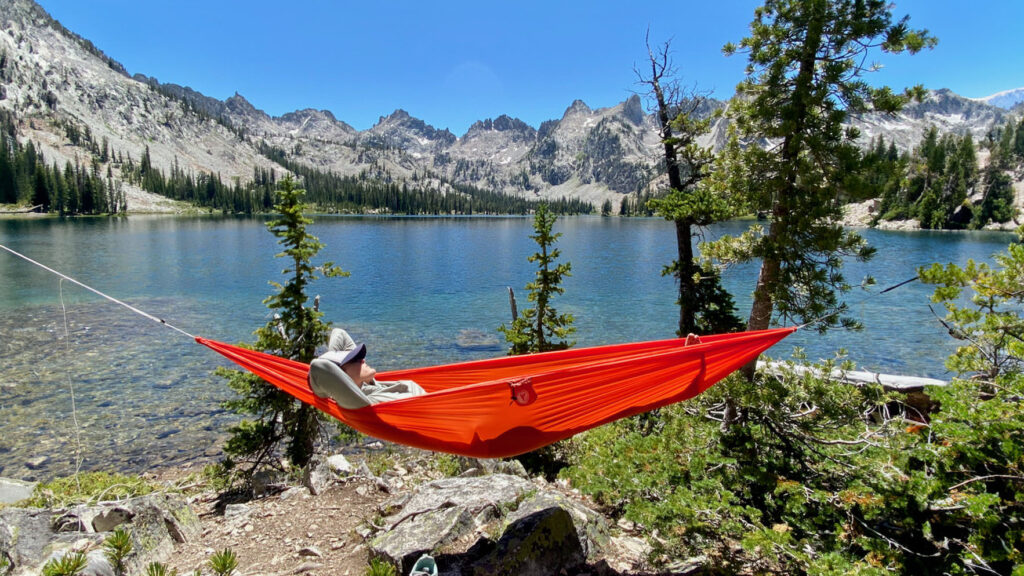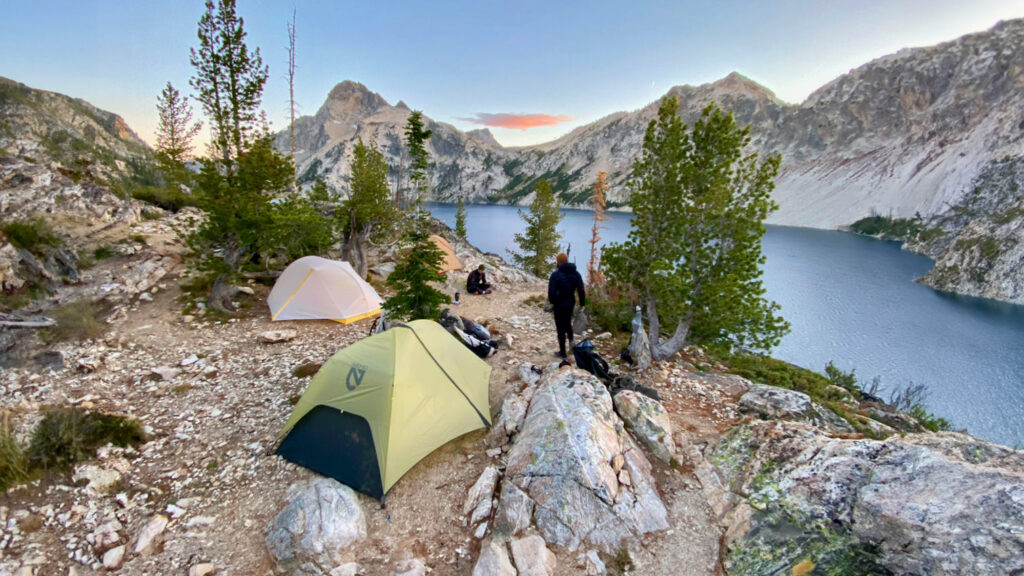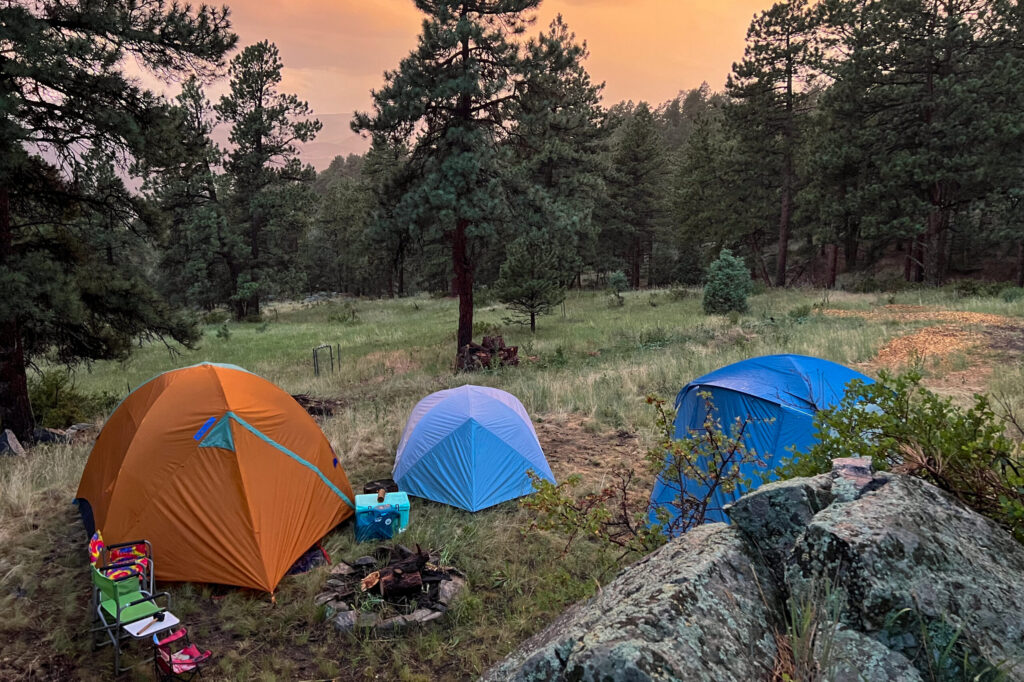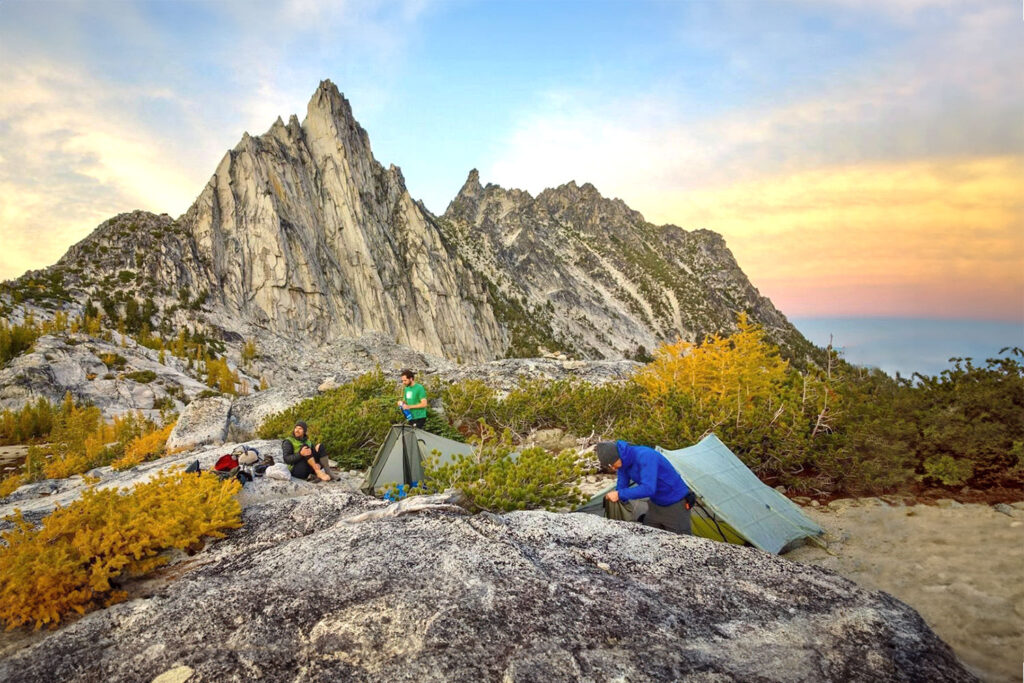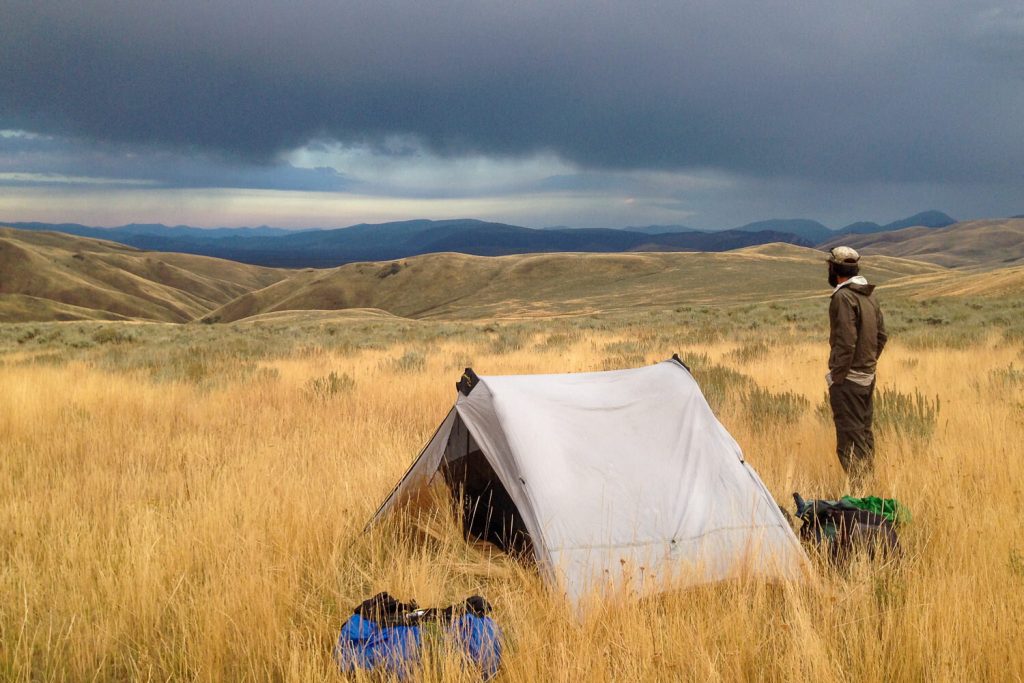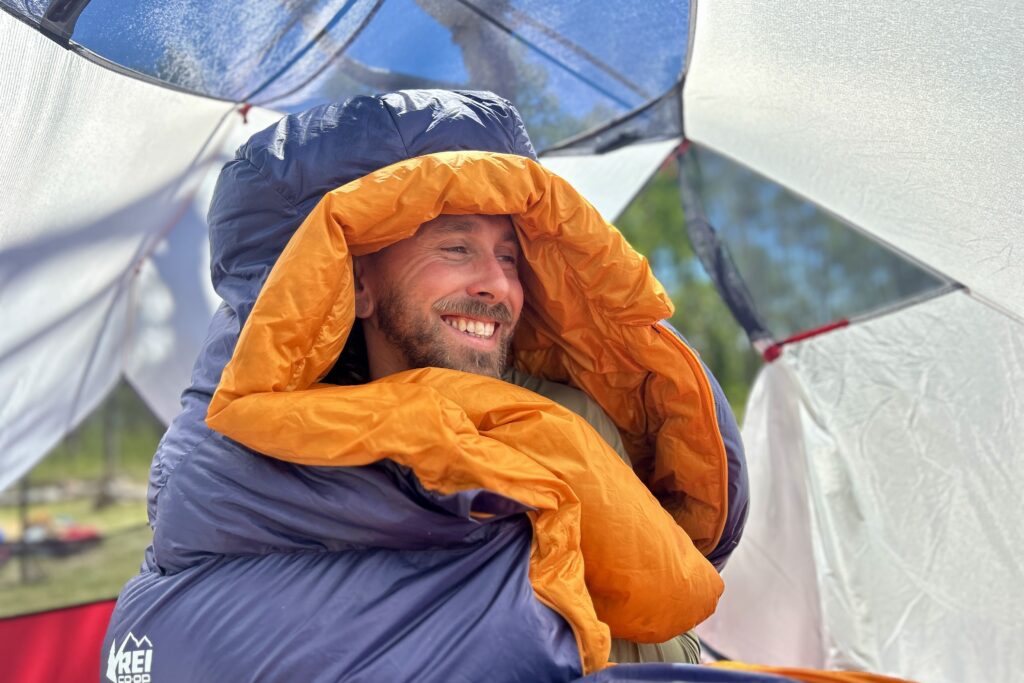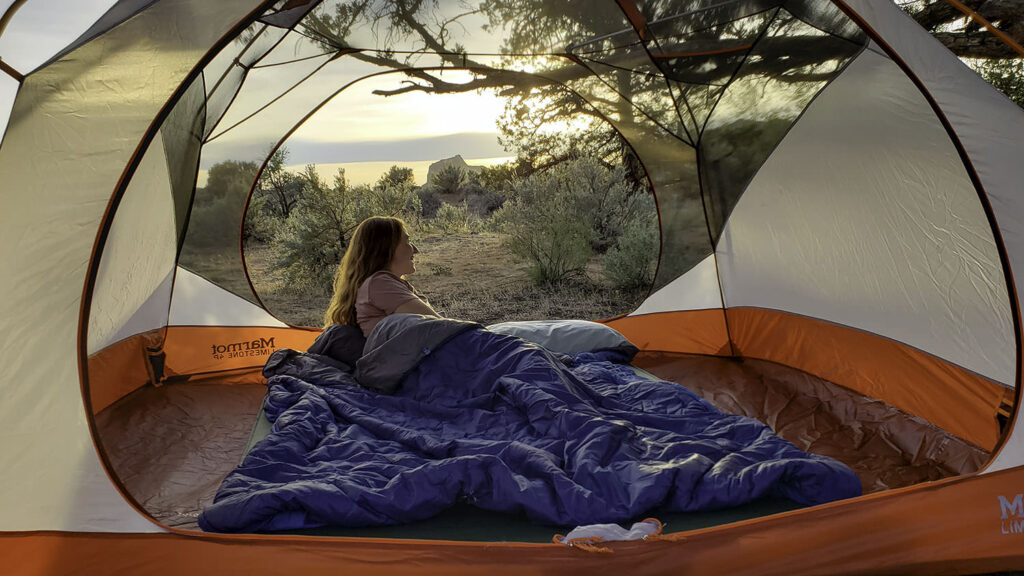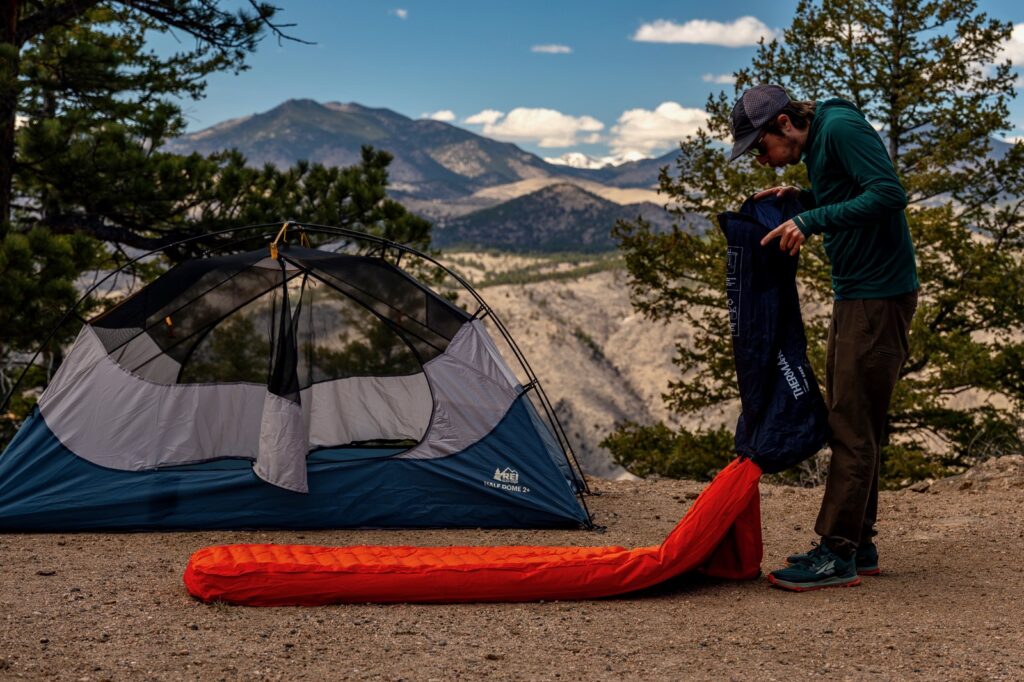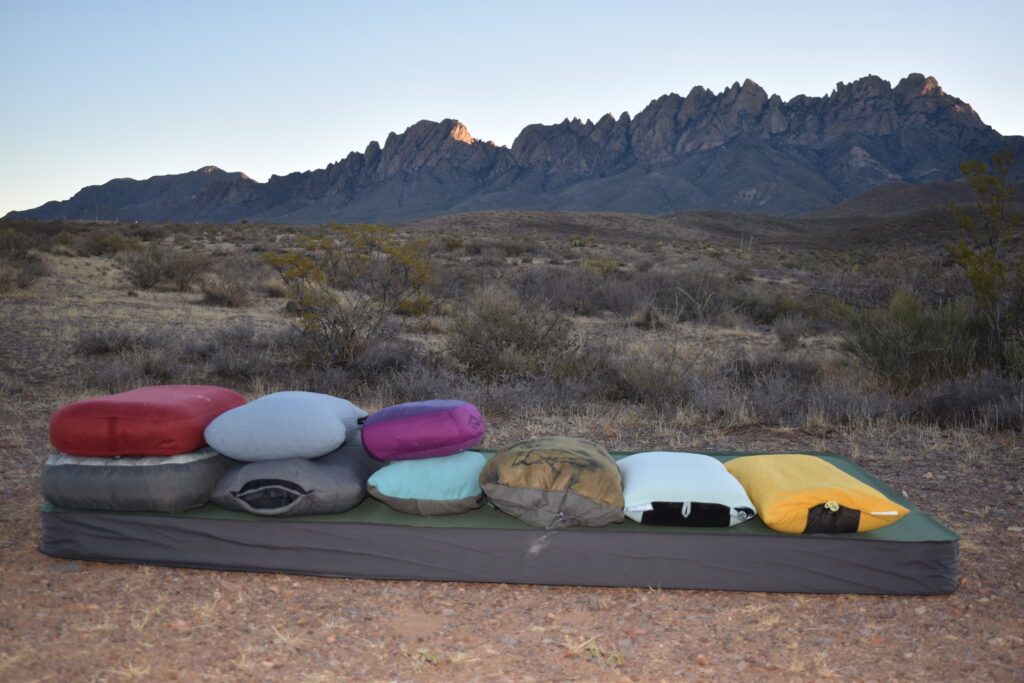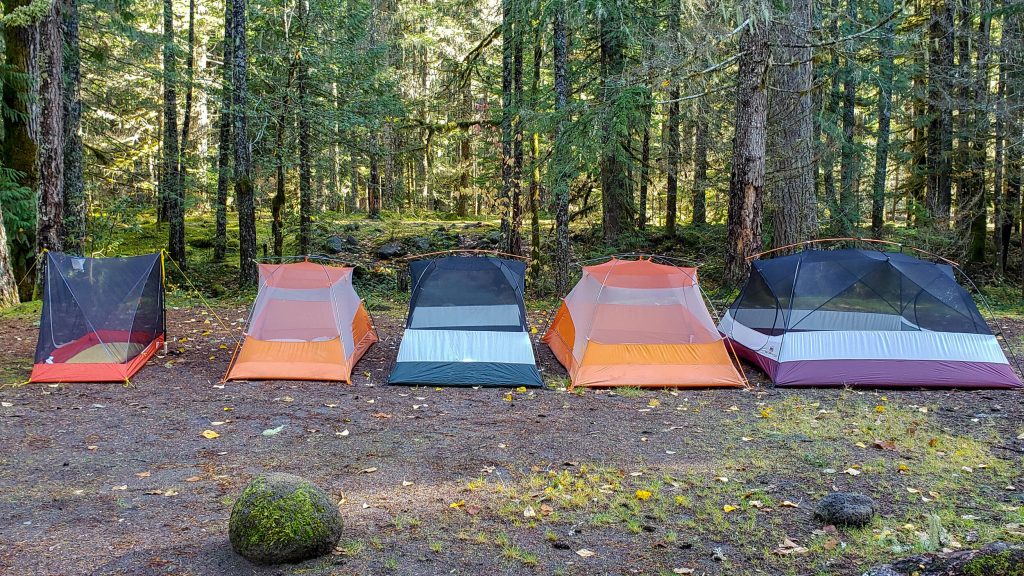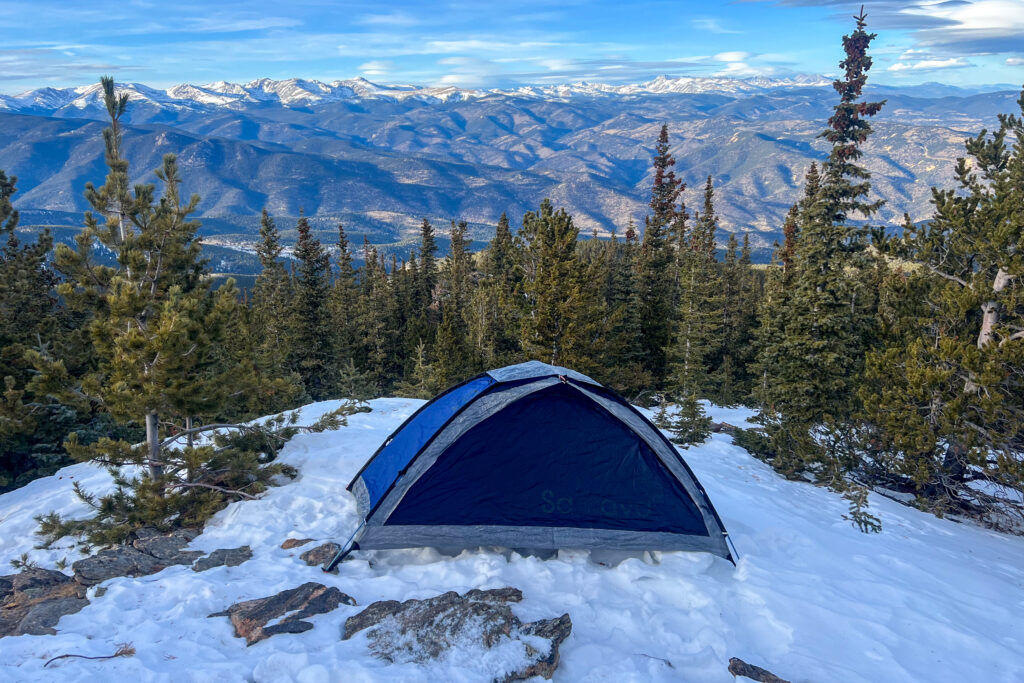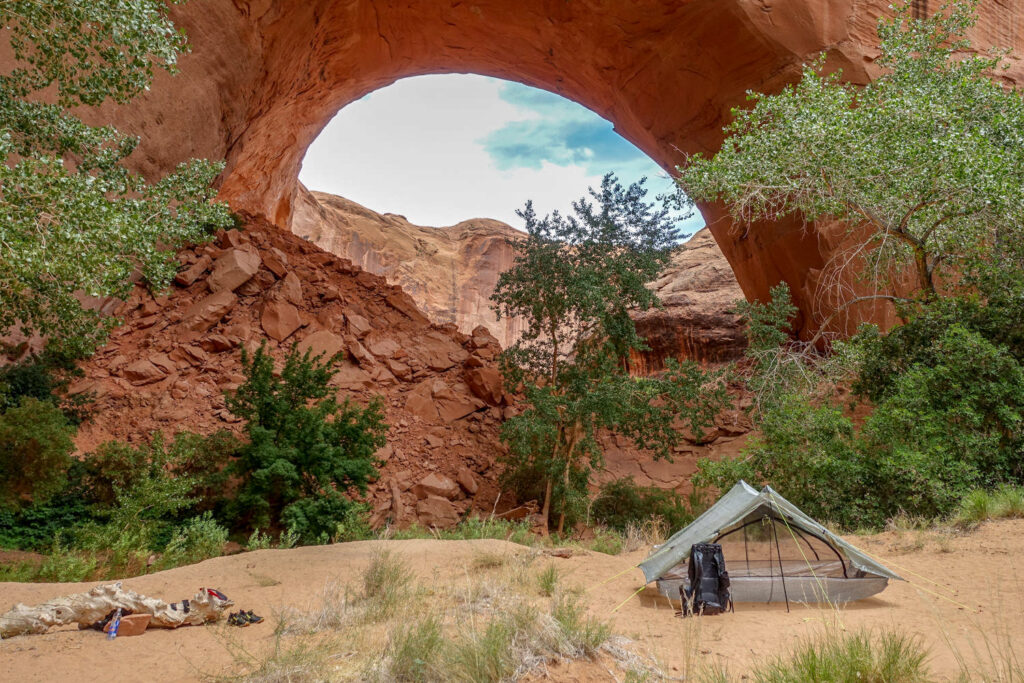
Bottom Line
Overall, The North Face ThermoBall Traction Mule V has the comfort of a slipper but the tough sole of an outdoor shoe. We reached for these more than any other of the camp shoes in our gear guide.
The North Face lists these as insulated camp shoes – but the lowest on their three-tiered warmth scale. We had issues with their lack of warmth in temperatures below 40 degrees and were disappointed at how sweaty our feet got once temperatures creeped into the high 50s. It is important to understand that these are not as warm and insulated as the Feathered Friends Down Booties.
However, this insulated bootie kept us comfortable indoors, outdoors, and around camp. It also looks attractive in town. We found it was a great option to wear on the way to the trailhead or ski resort.
How We Tested
We tested this camp shoe in different environments and for different lengths of time to best understand how this shoe fits, performs, and wears throughout the day. Our first test was a night of camping on very rocky terrain, including setting up a tent, cooking food, running around with the dog, and kicking back in camp chairs as the night fell. In the morning, we took these for a walk around a paved and dirt loop –– about 5 miles in total of meandering. The second was a full day around the house from waking up to saying goodnight. During this day, we chased children around the yard, giving piggyback rides and tossing around a soccer ball, as well as walking, sitting, and standing around the house.
Quick Specs
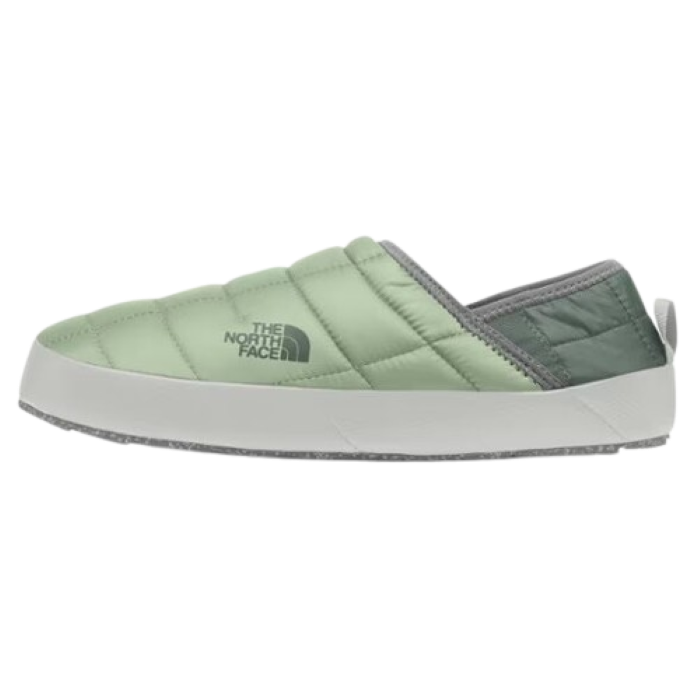
The North Face Thermoball Traction Mule V
Best Camp Slipper
CleverHiker Rating: 4.6/5.0
Price: $59
Weight (Pair): 14.2oz
Pros
- Easy slip-on with collapsible heel
- Treaded sole
- Good cushioning
- Camp/Home versatility
- Includes recycled materials
Cons
- Only comfortable in 40-60 degree temps
- Almost one pound per pair

COMFORT
The North Face ThermoBall Traction Mule V rates highly for comfort thanks to its roomy fit, ease of wear, and little to no break-in. We recommend sizing up – We wore a full size up from our normal shoe size and found this to be a good fit.
At first wear, we found the Mule to be roomy with great fit. We wore this shoe with Darn Tough wool socks – one of our favorite hiking socks – in a few different settings as well as without socks. Each time, we could wiggle our toes and felt that the toe box was wide enough. Our toes never hit the front of the shoe when sitting, standing, or walking around. Throughout the tests, the heel kept our foot in place and allowed us to walk comfortably all day.
We thought the shoe slipped on well. The heel is made to collapse, so you can slide it on and wear it as a mule when in a rush. When testing, we kept this by the side of our tent to slip on for midnight bathroom runs. They were easy to slip on in the dark.

VERSATILITY
When testing in the field, we loved that we could walk away from camp in the Traction Mule V to explore the surrounding areas. Its sole allows for basic walks outside. In Yosemite, we felt comfortable walking along icy and slick, leaf-filled pavement. These would make changing in the ski resort parking lot easier.
The Mule’s weight and packability were appropriate for backpacking. The one-pound weight may be limiting for ultralighters, but these insulated slippers packed down better than several camp shoes and sandals.
However, we only found them palatable to wear in cool temperatures.
At camp, when temps hit the lower 40s with frozen ground underfoot, our tester felt some cold seep in –– even with wool socks on. Her toes were popsicles when temps hit mid-to-low 30s. Our feet also felt sweaty and clammy indoors with the thermostat set at 69 degrees – even without socks on.

SUPPORT
We tested The North Face Mule’s support by using the bend, twist, squeeze method. During this test, we got mixed results.
We placed the toe of the shoe on the ground and pressed the heel down. The entire shoe crumpled beneath the pressure laid on it. This wasn’t ideal and, honestly, surprising because of the thick and cushioned sole of this shoe. Unsurprisingly, after the bend test, the shoe also did not hold up to the twist test. This shoe twirled around better than a wet towel.
However, when we conducted the final support test –– squeezing the heel –– we were pleasantly met with resistance. The heel kept its shape and structure through this test.
In the field, we took these on a meandering 5-mile, flat-ish walk. About 3 miles in, we noticed pain through the arches of our feet.

DURABILITY
Our pair of The North Face ThermoBalls held up as we walked through mud and gravel and tried to keep up with screaming 6-year-olds. These outdoor slippers are made with a ripstop material with a good reputation for durability. Our only complaint is that the fabric on the upper stains easily.
The North Face recommends cleaning off mud and dirt to prevent premature decay of the fabric. They do not recommend throwing them in the wash. Instead, spot wash and air dry.

Should You Buy The North Face ThermoBall Traction Mule?
The North Face ThermoBall Traction Mule V makes a great slipper-like shoe for car campers and outdoor adventurers who pack a trailhead change of clothes/shoes. We would not recommend this for backpacking trips or for those who need a reliable way to keep warm at camp in temperatures colder than the low 40s. They might be a good option for summers in places that cool off considerably at night or for those who have poor circulation.

What Other Camp Shoes Should You Consider?
If these insulated slippers aren’t for you, browse our full list of camp shoe recommendations.
Feathered Friends Down Bootie Review: If you are looking for a reliable shoe to keep you warm when temps drop below 45 degrees, the Feathered Friends is a good choice.
Bedrock Mountain Clog Review: Though this shoe is not necessarily made for winter, when paired with a wool sock, it can take on cooler temps.
KEEN Hyperport H2 Review: This shoe makes up for what The North Face Mule lacks – the ability to travel comfortably through water.



